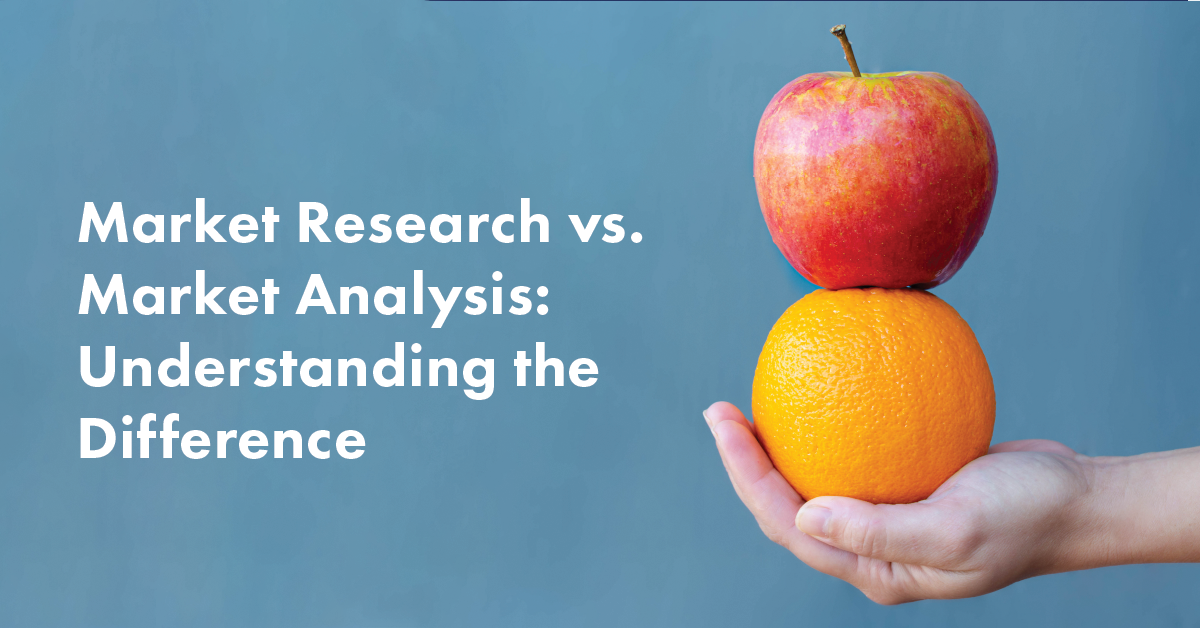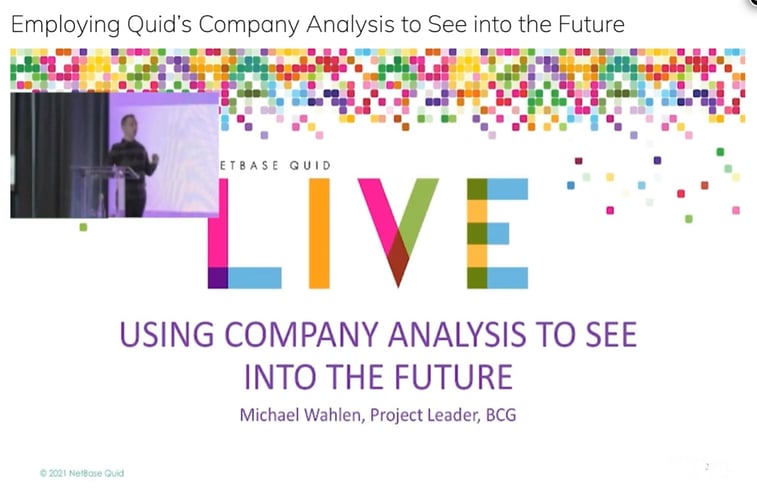Admin

Introduction to the Blog Summary
This blog clarifies the differences between market research and market analysis, emphasizing their unique roles in helping businesses understand market dynamics, predict trends, and make informed decisions.
Key Points Overview
Top Takeaways
Conclusion
Understanding the distinct roles of market research and analysis is vital for businesses to make strategic decisions, innovate effectively, and stay competitive. Utilizing platforms like Quid ensures a seamless integration of data and insights, driving success and growth.
Market research and market analysis are often mistaken for the same thing, but they serve distinctly different purposes. Both provide decision-makers with critical insights into the market landscape, leveraging big data technologies to track trends and forecast future developments. However, market research offers a focused lens on customer behavior, preferences, and motivations, while market analysis takes a broader, contextual approach—identifying patterns, competitive positioning, and actionable opportunities within the industry. Understanding this distinction is essential for businesses looking to make informed, strategic decisions.
Market research is the structured process of understanding a market’s consumer base, offering deep insights into both current and potential customers. It helps businesses refine their strategies by answering critical questions about consumer behavior, preferences, and sentiment. To achieve this, market research employs a combination of methodologies, including primary and secondary research, as well as quantitative and qualitative data analysis.
Through market research, brands can gain clarity on:
By answering these questions, market research enables businesses to align their offerings with consumer needs, ensuring data-driven decision-making that enhances customer engagement and market positioning.
Businesses conduct market research for a variety of reasons, each contributing to stronger decision-making and competitive advantage. Here are three key reasons why market research is essential:
Every year, countless new products enter the market, yet many fail due to poor market fit. Harvard Business Review highlights five major factors that contribute to these failures, and a lack of proper market research is often at the root. Companies sometimes rush product launches or rely too heavily on intuition rather than data, leading to misaligned offerings that don’t resonate with their target audience.
By conducting thorough market research, businesses can validate demand, refine product positioning, and enhance their chances of success before making significant investments.
Customer acquisition is an investment—one that often costs five times more than retaining existing customers. High acquisition costs are frequently the result of low conversion rates, where businesses spend significant resources on marketing efforts that fail to attract the right audience.
Market research helps identify and target the most promising customer segments, refine messaging, and optimize marketing strategies to improve conversion rates—ultimately reducing the overall cost of customer acquisition.
Retaining existing customers is far more cost-effective than acquiring new ones, with average retention rates exceeding 60%. However, continued loyalty isn’t guaranteed unless customers are satisfied with their experience. Brand advocacy, repeat purchases, and long-term customer relationships all hinge on meeting and exceeding consumer expectations.
Market research provides valuable insights into customer needs, preferences, and evolving sentiments. By analyzing direct feedback, peer opinions, and broader consumer trends, businesses can fine-tune their offerings, address pain points, and create experiences that foster lasting brand loyalty.
Market analysis is the process of evaluating the various forces shaping a market, uncovering how they interact to create current conditions and influence future trends. It provides a comprehensive view of the business environment, helping organizations assess market size, competitive dynamics, and growth potential.
While market research focuses on consumer behavior, market analysis builds upon those insights and extends into broader industry dynamics. It examines business models, production methods, technological advancements, strategic partnerships, and competitive successes—offering a deeper understanding of the factors driving market evolution.
Key areas of focus in market analysis include:
By analyzing these factors, businesses can make more informed strategic decisions, anticipate market shifts, and position themselves for long-term success.
Boston Consulting Group (BCG) is a global consulting firm that helps leading businesses tackle complex challenges and seize new opportunities. Given its role in shaping the strategies of top organizations, BCG places a strong emphasis on market analysis, leveraging advanced platforms to deliver data-driven insights.
Michael Wahlen, a consultant at BCG, demonstrated this approach in a live presentation, where he detailed how his team used Quid’s AI-powered analytics to uncover trends and opportunities in the market. In one case, BCG advised a manufacturing client on market trajectory by identifying over 2,500 emerging competitors—a crucial insight that shaped the client’s competitive strategy.
By analyzing these new entrants based on sub-sector, innovation focus, and capital investment, Wahlen’s team assessed the level of competitive threat and provided strategic recommendations. This case illustrates how market analysis goes beyond identifying trends—it empowers businesses to anticipate shifts, mitigate risks, and position themselves for long-term success.

Market analysis is essential for businesses looking to stay competitive, anticipate shifts, and make informed strategic decisions. Here are three key reasons why conducting market analysis is critical:
A strong business model is built on two foundational pillars: pricing and costs. While factors like product category and target market are important, they ultimately support these core considerations. In a competitive market, pricing isn’t determined in isolation—it’s shaped by external forces such as consumer demand, competitor positioning, and industry trends.
Market analysis provides the intelligence needed to develop a pricing strategy that aligns with market conditions while ensuring profitability. It also helps businesses optimize cost structures by identifying efficiencies, reducing risks, and improving operational strategies.
Before achieving product-market fit, businesses must first establish whether demand exists. Market analysis uncovers unmet needs, helping organizations determine whether an opportunity is viable.
More importantly, it reveals why gaps exist in the market. Is there a lack of innovation? Are competitors struggling to meet demand due to logistical challenges? Understanding these nuances helps businesses avoid costly mistakes while positioning their products as the preferred solution.
Market analysis isn’t just about risk mitigation—it’s also a powerful tool for opportunity discovery. Gaps in the market, untapped customer segments, and overlooked competitive advantages can all be revealed through deep analysis. Sometimes, even an internal capability—previously viewed as a secondary strength—can be transformed into a profitable offering.
By leveraging market intelligence, businesses gain strategic inspiration, empowering them to innovate and capitalize on emerging trends before competitors.
Market research and market analysis are often interconnected, but they serve distinct purposes within a business strategy. While they share common elements—such as data collection and trend evaluation—market research is actually a subset of the broader market analysis process.
Market research focuses on collecting consumer-specific insights, answering questions about customer behavior, preferences, and sentiment. It relies on methodologies like surveys, focus groups, and behavioral tracking to understand what drives purchasing decisions. At its core, market research is about gathering raw data and factual observations about the market and consumers, without highlighting broader industry implications or conducting an in-depth analysis of the findings.
Market analysis, on the other hand, takes a wider industry perspective. It examines competitive landscapes, emerging trends, regulatory shifts, and economic conditions to provide a more strategic outlook. Businesses use market analysis to assess demand, forecast growth, and make high-level decisions that shape long-term direction. By analyzing patterns in consumer behavior and market movements, it uncovers the underlying factors driving change, helping businesses understand not just what is happening, but why and how these shifts impact the broader industry.
| Aspect | Market Research | Market Analysis |
|---|---|---|
| Focus | Consumer behavior, preferences, and sentiment | Industry-wide trends, competition, and external forces |
| Scope | Narrow—focuses on specific audiences and customer insights | Broad—examines entire market landscapes and business environments |
| Objective | Understanding customer needs, improving products, and refining messaging | Assessing market conditions, forecasting growth, and identifying strategic opportunities |
| Data Sources | Surveys, focus groups, customer feedback, and behavioral data | Economic reports, competitor performance, regulatory changes, and technological advancements |
| Use Case Examples | Testing a new product concept with target customers, measuring brand perception, identifying marketing opportunities | Evaluating market demand for expansion, assessing competitive threats, analyzing industry-wide shifts |
Market Research in Action:
A beauty brand launching a new skincare line may conduct consumer surveys and focus groups to gather feedback on packaging, product benefits, and pricing before bringing it to market. By collecting this direct feedback, the brand can identify what resonates with potential customers and refine its messaging and formulations accordingly. However, this research focuses solely on what consumers prefer—not necessarily why those preferences exist in the broader market landscape. Without deeper analysis, the brand would lack insights into competitive positioning, industry shifts, or external factors influencing consumer demand.
Market Analysis in Action:
A retail chain considering expansion into a new region may perform competitive benchmarking and economic analysis to determine demand, assess risk, and forecast long-term viability. This involves analyzing sales patterns, consumer spending trends, regulatory barriers, and competitor performance to understand how various market forces interact. By looking beyond raw data, market analysis helps the business uncover why demand is growing in a particular location, how competitors are responding, and what economic or industry shifts could impact future success. These insights ensure the expansion strategy is backed by a deep understanding of the market landscape, rather than just surface-level consumer preferences.
Though they intersect, the fundamental difference between market research and market analysis lies in their scope and depth. Market research focuses on gathering raw consumer insights, providing businesses with a clear picture of customer preferences and behaviors. In contrast, market analysis goes beyond data collection, examining industry-wide forces, competitive dynamics, and market trends to uncover the bigger picture. While market research helps businesses refine products and messaging, market analysis equips them with the strategic foresight needed to navigate market shifts, mitigate risks, and capitalize on emerging opportunities. Together, they form a comprehensive approach to informed decision-making.
Quid is a powerful consumer and market analysis platform designed to seamlessly integrate both market research and market analysis into a single, streamlined solution. Built with cutting-edge AI technology, Quid enables businesses to collect, process, and analyze vast amounts of structured and unstructured data—whether quantitative or qualitative—with speed and precision.
By scanning data from across the web, Quid uncovers real-time market trends, competitive insights, and consumer sentiment, keeping businesses aligned with evolving opportunities and challenges. It acts as a hybrid solution, complementing existing research tools and providing a holistic view of both customer behavior and broader industry dynamics.
At the core of Quid’s offering is an intuitive, easy-to-navigate insights dashboard in place of a traditional SaaS tool, designed to deliver actionable insights without the complexity of traditional analytics platforms. With the Intelligence Connector, businesses can integrate Quid’s insights directly into their existing research and decision-making tools, creating a seamless workflow for data-driven strategy execution.
Want to see it in action? Request a demo today, and we’ll walk you through how Quid can enhance your market intelligence, streamline your research efforts, and help you stay ahead of the competition.